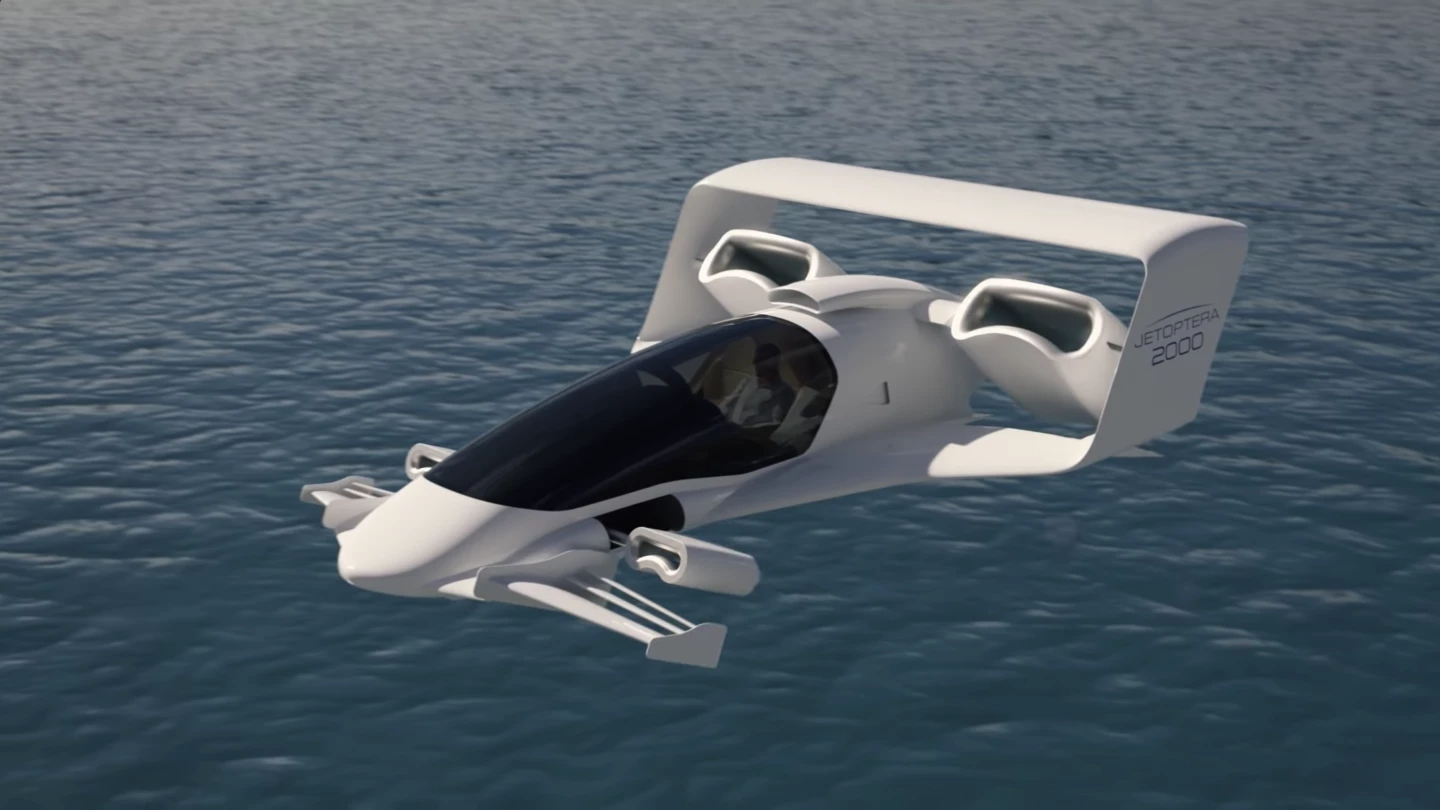Like bladeless Dyson fans on steroids, Jetoptera's unique aircraft propulsion systems look like pure sci-fi. But they're beginning to demonstrate some fascinating capabilities in testing, and the next step will be a super-fast VTOL aircraft design.
How Jetoptera's Fluidic Propulsion Systems work
We've explained these fluidic propulsion systems before in detail. Indeed, Sir James Dyson did a pretty decent job of explaining the basic concept to The Telegraph back in 2010. But in a nutshell, they're not magic, they don't use ionic propulsion, and while there are no blades or moving parts visible, they require a flow of compressed air to function.
You can use whatever you like as a compressed air source, but Jetoptera doesn't see a ton of utility at this point in an electric compressor; battery density simply isn't high enough to deliver range figures the company would consider useful. Instead, the company is starting out with efficient gas turbine generators, routing the exhaust gas through the fluidic propulsion systems.
This compressed air is forced through tiny, directional slits all around the inner surface of Jetoptera's hollow propulsion units. These inner surfaces are shaped like wings, and they do the same job, creating a low-pressure vortex right in the middle of the loop as the compressed air rushes over them.

The low-pressure vortex – plus the fluid entrainment vortices that form where the accelerated air rushes out the back and interacts with ambient air – sucks up to 15 times as much air through the loop as was fed through by the compressor, and this multiplies the thrust accordingly.
The Benefits
First and foremost is efficiency. Jetoptera says the system delivers 10% more thrust and uses 50% less fuel than a small turbojet. Compared to turbofans or turboprops, it's about 30% lighter and much less mechanically complex – clear advantages in aviation.
When it comes to transitioning VTOL aircraft, the fluidic propulsion system is much lighter and less complex than tilting propeller systems, and you're not trying to tilt a great big spinning gyroscope, so it's easier to adjust the angle as you transition between VTOL and cruise flight.

They're reportedly significantly quieter than propellers, too; with acoustic treatment Jetoptera says it's expecting to prove they're as much as 25 dBA quieter than a comparable prop, with an atonal noise signature. They also won't contribute much in the way of vibrations, although you do have to account for noise and vibrations from the combustion generator.
You can position them around your airframe without worrying about having spinning propellers near ground crew or pedestrians, and you can easily design them to retract into the airframe for high-speed cruise if necessary.
What's more, you can tailor the shape to suit your application; in a blown-wing short takeoff and landing (STOL) design, for example, you might design long, flattish fluidic propulsion units that can push air evenly right across the surface of the wing. Indeed, the ability to generate so much lift from a wing surface means you can have much shorter wings and a much more compact form factor than a traditional airplane design – hence why many of Jetoptera's concepts and prototypes use a tight box wing.

Current test results
Indeed, that's one of the things Jetoptera has been testing. The company says it's just finished its fourth Small Business Innovation Research (SBIR) contract with the US Air Force, all of which are stepping stones toward an eventual HSVTOL (High-speed VTOL) aircraft design.
The most recent contract allowed for the design and build of a test rig for an upper surface blown wing, using a high-lift flap system to deliver the maximum possible amount of lift. Jetoptera worked with aerospace heavyweight Northrop Grumman, and its subsidiary, unconventional aerospace design and materials specialist Scaled Composites, hooking up the test system to an electric compressor for static testing.
The company says the tests demonstrated lift coefficients "exceeding 8.0 – up to 40% better than propeller blown wings results obtained under other programs and with lower noise emission and vibrations."

Mach 0.8 HSVTOL design
Jetoptera says it's also built a sub-scale model of its conceptual design for the AFWERX HSVTOL program, in which it's one of 11 companies still in the running to design a next-gen VTOL military aircraft capable of much higher performance than anything currently on the market.
The sub-scale model is already being tested in a wind tunnel. Jetoptera says it predicts this machine will be capable of speeds around Mach 0.8 (988 km/h, 614 mph). That's faster than the cruise speed of a Dreamliner, and roughly twice as fast as any tiltrotor can manage. To reach these speeds, the fluidic propulsion systems will need to be fed by some pretty serious engines, so turbine engine specialist Pratt & Whitney is joining Northrop Grumman and Scaled Composites on the project team.
The concept aircraft design will be validated in the next six months, as part of a separate Small Business Technology Transfer (STTR) contract with AFWERX that's already underway, and Jetoptera says it expects to have a demonstrator built in 2025 – perhaps not full scale, but "the largest size HSVTOL demonstrator we have ever worked on and with unique capabilities."

For such a radically different and sci-fi-looking concept, Jetoptera's fluidic propulsion system is certainly starting to look like it's got a legitimate contribution to make in the aerospace world. The company says it's signed a deal for a parafoil propulsion system, and it's in discussions with other companies looking to use these things on manned and unmanned aircraft in a range of sizes. It's amassed more than 50 patents, with at least 100 more in the pipeline.
One thing it hasn't done much of is updating its YouTube channel and publicity materials, so you'll have to look at this four-year-old video to see the fluidic propulsion system in action on a remote-controlled aircraft.
Source: Jetoptera via FutureFlight











